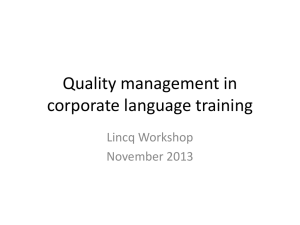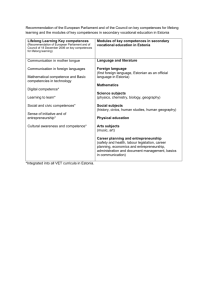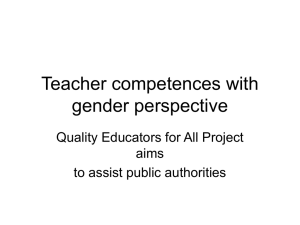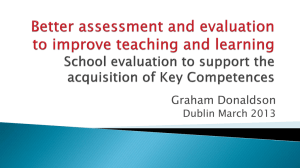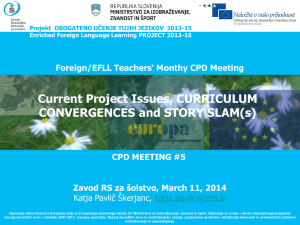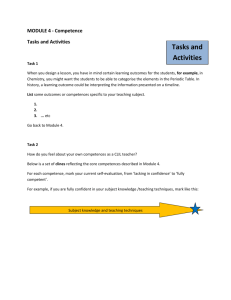mutual contributions of regional and national languages
advertisement
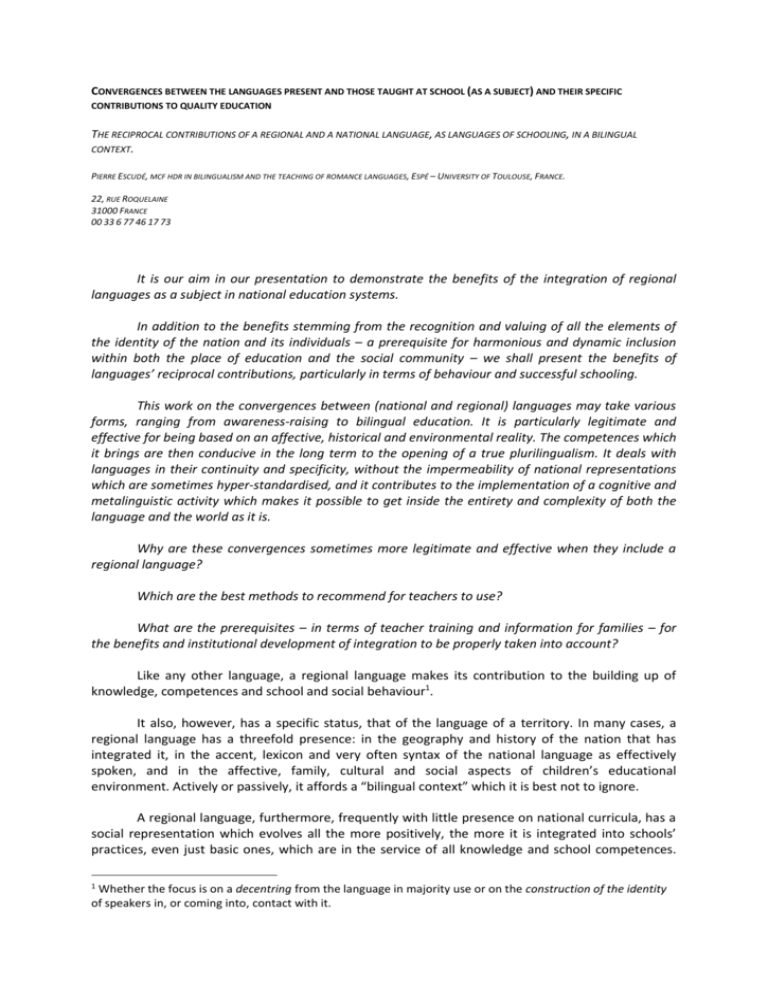
CONVERGENCES BETWEEN THE LANGUAGES PRESENT AND THOSE TAUGHT AT SCHOOL (AS A SUBJECT) AND THEIR SPECIFIC CONTRIBUTIONS TO QUALITY EDUCATION THE RECIPROCAL CONTRIBUTIONS OF A REGIONAL AND A NATIONAL LANGUAGE, AS LANGUAGES OF SCHOOLING, IN A BILINGUAL CONTEXT. PIERRE ESCUDÉ, MCF HDR IN BILINGUALISM AND THE TEACHING OF ROMANCE LANGUAGES, ESPÉ – UNIVERSITY OF TOULOUSE, FRANCE. 22, RUE ROQUELAINE 31000 FRANCE 00 33 6 77 46 17 73 It is our aim in our presentation to demonstrate the benefits of the integration of regional languages as a subject in national education systems. In addition to the benefits stemming from the recognition and valuing of all the elements of the identity of the nation and its individuals – a prerequisite for harmonious and dynamic inclusion within both the place of education and the social community – we shall present the benefits of languages’ reciprocal contributions, particularly in terms of behaviour and successful schooling. This work on the convergences between (national and regional) languages may take various forms, ranging from awareness-raising to bilingual education. It is particularly legitimate and effective for being based on an affective, historical and environmental reality. The competences which it brings are then conducive in the long term to the opening of a true plurilingualism. It deals with languages in their continuity and specificity, without the impermeability of national representations which are sometimes hyper-standardised, and it contributes to the implementation of a cognitive and metalinguistic activity which makes it possible to get inside the entirety and complexity of both the language and the world as it is. Why are these convergences sometimes more legitimate and effective when they include a regional language? Which are the best methods to recommend for teachers to use? What are the prerequisites – in terms of teacher training and information for families – for the benefits and institutional development of integration to be properly taken into account? Like any other language, a regional language makes its contribution to the building up of knowledge, competences and school and social behaviour1. It also, however, has a specific status, that of the language of a territory. In many cases, a regional language has a threefold presence: in the geography and history of the nation that has integrated it, in the accent, lexicon and very often syntax of the national language as effectively spoken, and in the affective, family, cultural and social aspects of children’s educational environment. Actively or passively, it affords a “bilingual context” which it is best not to ignore. A regional language, furthermore, frequently with little presence on national curricula, has a social representation which evolves all the more positively, the more it is integrated into schools’ practices, even just basic ones, which are in the service of all knowledge and school competences. 1 Whether the focus is on a decentring from the language in majority use or on the construction of the identity of speakers in, or coming into, contact with it. The relationship with the school frequently changes as a result: the school, taking account of the territory’s immanent reality, and not just a transcendent truth of which it might constitute the temple, is not so much a place which integrates as a place of social inclusion. Since they are neither foreign nor national languages, regional languages are a matter for “specific teaching methods”. Regional languages lead people to regard plurilingualism as an intrinsic and pragmatic reality of the citizens of the state. They often act as bridges between the national language, regarded as a standardised and impermeable whole, and “foreign” languages, which are equally so. They make it possible to deal with the otherness fundamental to any identity (that of a person, of a group, of knowledge, of language) at the same time as they reveal that that otherness belongs to one and the same person, that it is not foreign to the learner’s sphere and that, ultimately, it is intrinsic to the idea of what language is – both universal and particular. They make it possible to point out, at a very early stage, that language is a plural, not a single, system. Numerous convergences are possible. For instance within practices used to raise awareness of languages and the forms of creation that regional languages bring with them (mimologism, stories, proverbs, songs, literature of the past and present, as well as the naming of places2, historical documents, literary works, and so on). This opens the way for specific teaching activity and makes certain educational explorations possible: practical surveys, material from parents or family, use of environmental reality (monuments, place names, different speakers) as true-life elements illustrating school subjects which are dealt with nationally. Intercomprehension is a path which is particularly beneficial when languages are from the same family. Finally, the most promising path may be that of early bilingualism encompassing both national and regional language. Depending on whether or not the languages under consideration are related, approaches and points to be worked on will not be the same, but there are benefits to be expected in both cases in respect of categories of linguistic analysis, work on morphology, syntax, lexicon and variations through language observation procedures; this twofold exposure consolidates the learning of each of the two languages by raising introspective and heuristic awareness. Work on closely related languages from a single territory paves the way for true plurilingualism encompassing the benefits of more refined discriminatory and phonatory abilities, and furthermore without complexities. However they work, extensively or intensively, these convergences have positive effects on both languages as subjects, making it possible, when an appropriate didactic approach is taken, for competences to move between languages, the first step to metalinguistic competences, and therefore to a far better command of language, crucial to successful schooling. As the first element of learning through languages, early bilingualism encompassing national and historical local language could ideally start off a curriculum chain continuing in the framework of CLIL (EMILE/non-language disciplines)-style teaching with this same language and/or “foreign” national languages, then on to university in the framework of learning involving “languages for specialists of other disciplines” (LANSAD). Being in many cases transfrontier or continuum languages, regional languages, finally, enable pupils to approach the reality of borders and continuity between human groups, concepts of knowledge and languages in a concrete and affective way. This first experience is fundamental to the generation of human and political behaviour showing greater solidarity. 2 http://loisirs.ign.fr/top-25-et-serie-bleue.html

